Nationality American Role Sculptor | Name Harriet Hosmer Movement Neoclassicism | |
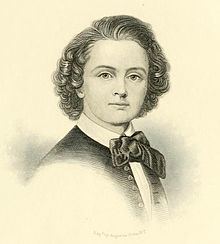 | ||
Died February 21, 1908, Watertown, Massachusetts, United States | ||
Arth 4117 19th century 4 harriet hosmer
Harriet Goodhue Hosmer (October 9, 1830 – February 21, 1908) was a neoclassical sculptor, considered the most distinguished female sculptor in America during the 19th century. She is known as the first female professional sculptor. Among other technical innovations, she pioneered a process for turning limestone into marble. Hosmer once lived in an expatriate colony in Rome, befriending many prominent writers and artists.
Contents
- Arth 4117 19th century 4 harriet hosmer
- Kate Culkin on Harriet Hosmer Part 1
- Early life and education
- Later life
- Context
- Legacy
- Selected works
- References
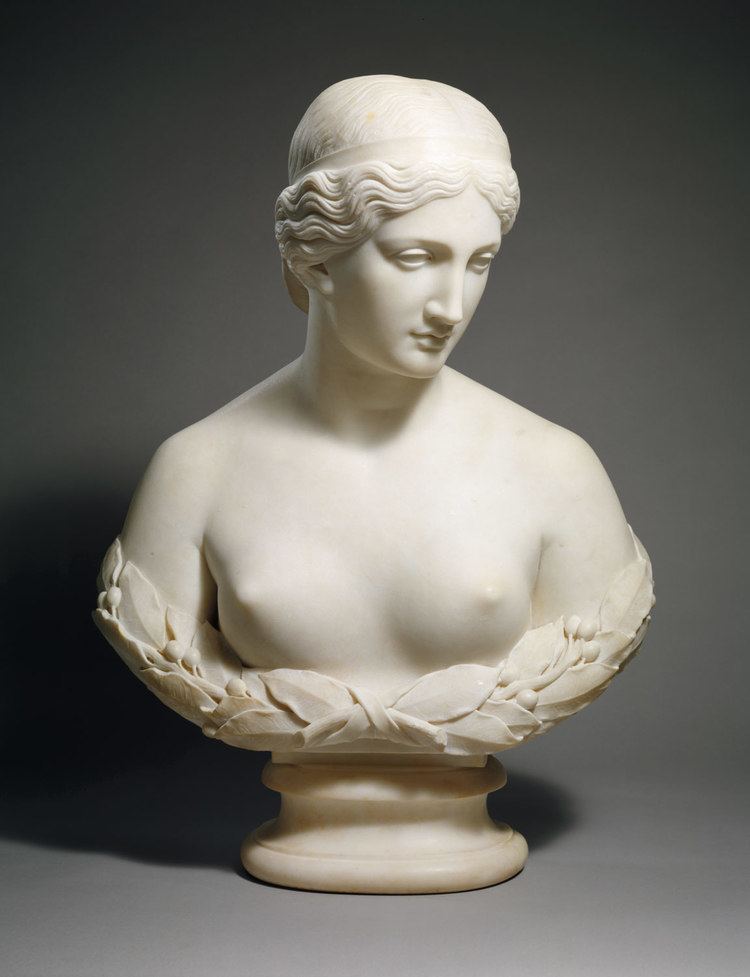
Kate Culkin on Harriet Hosmer. Part 1
Early life and education
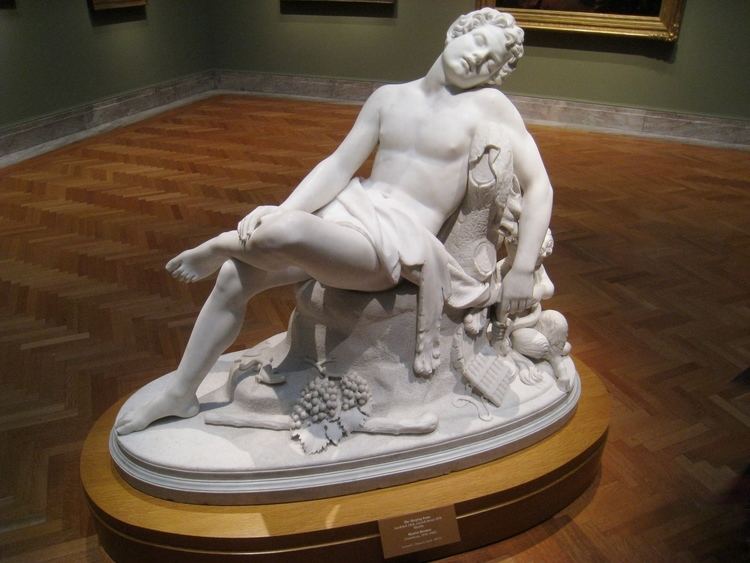
Harriet Hosmer was born on October 9, 1830 at Watertown, Massachusetts, and completed a course of study at Sedgewick School in Lenox, Massachusetts. Her mother and three siblings died during her childhood. She was a delicate child, and was encouraged by her father, physician Hiram Hosmer, to pursue a course of physical training by which she became expert in rowing, skating, and riding. He also encouraged her artistic passion. She traveled alone in the wilderness of the western United States, and visited the Dakota Indians.
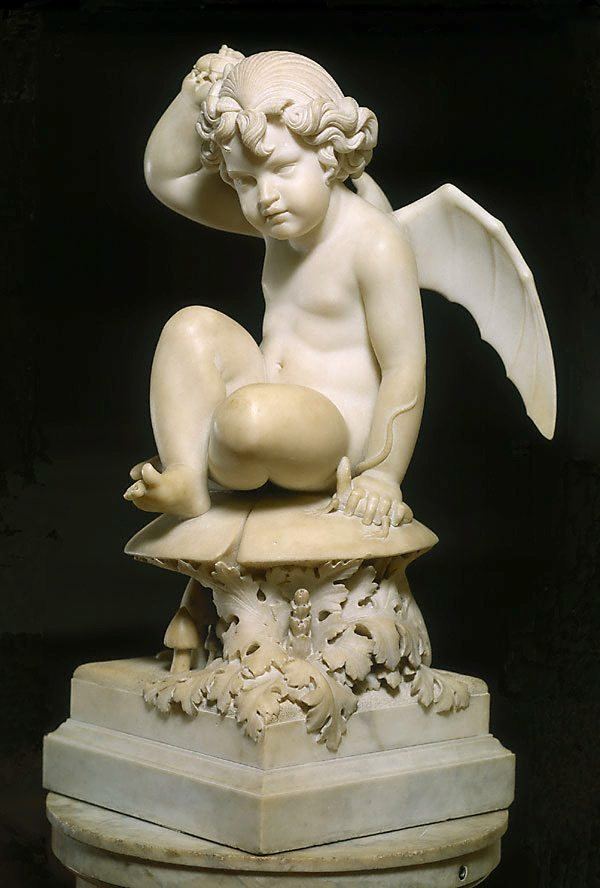
She showed an early aptitude for modeling, and studied anatomy with her father. Through the influence of family friend Wayman Crow she attended the anatomical instruction of Dr. Joseph Nash McDowell at the Missouri Medical College (then the medical department of the state university). She then studied in Boston and practiced modeling at home until November 1852, when, with her father and her friend Charlotte Cushman, she went to Rome, where from 1853 to 1860 she was the pupil of the Welsh sculptor John Gibson, and she was finally allowed to study live models.
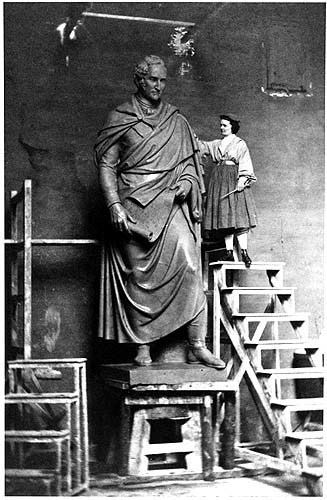
When Hosmer knew herself to be a sculptor, she knew also that in America was no school for her. She must leave home, she must live where art could live. She might model her busts in clay of her own soil, but who should follow out in marble the delicate thought which the clay expressed? The workmen of Massachusetts tended the looms, built the railroads, and read the newspapers. The hard-handed men of Italy worked in marble from the designs put before them; one copied the leaves which the sculptor threw into the wreaths around the brows of his heroes; another turned with the tool the folds of the drapery; another wrought up the delicate tissues of the flesh; none of them dreamed of ideas - they were copyists - the very hand-work that her head needed. And to Italy she went...
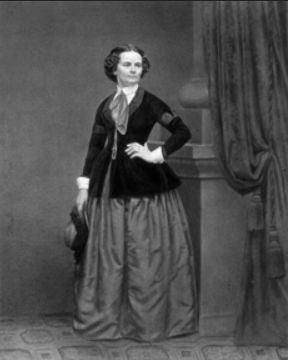
While living in Rome, she associated with a colony of artists and writers that included Nathaniel Hawthorne, Bertel Thorvaldsen, William Makepeace Thackeray, and the two female Georges, Eliot and Sand. When in Florence, she was frequently the guest of Elizabeth Barrett and Robert Browning at Casa Guidi.
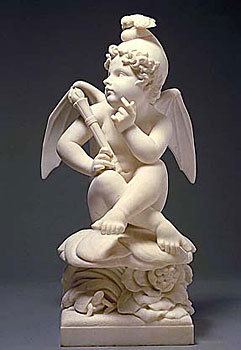
The artists included Anne Whitney, Emma Stebbins, Edmonia Lewis, Louisa Lander, Margaret Foley, Florence Freeman, and Vinnie Ream. Hawthorne was clearly describing these in his novel The Marble Faun, and Henry James called them a "sisterhood of American ‘lady sculptors'." As Hosmer is now considered the most famous female sculptor of her time in America, she is credited with having 'led the flock' of other female sculptors.
Hosmer was drawn to the Neoclassical style, which was easy to study given her presence in Rome. She enjoyed studying mythology, and she created various representations of mythological icons, such as the sculpture of The Sleeping Faun, which includes intricate details of elements such as his hair, the grapes, and the cloth draped over him.
Later life
She also designed and constructed machinery, and devised new processes, especially in connection with sculpture, such as a method of converting the ordinary limestone of Italy into marble, and a process of modeling in which the rough shape of a statue is first made in plaster, on which a coating of wax is laid for working out the finer forms.
Hosmer later lived in Chicago and Terre Haute, Indiana.
She was devoted for 25 years to Louisa, Lady Ashburton, widow of Bingham Baring, 2nd Baron Ashburton (died 1864).
Hosmer died at Watertown, Massachusetts, on February 21, 1908, and is buried in the family plot at Mount Auburn Cemetery, Cambridge. Aside from the work she produced, Harriet Hosmer made her mark on art history and feminist and gender studies. As the National Museum of Women in the Arts put it, "Harriet Goodhue Hosmer defied 19th-century social convention by becoming a successful sculptor of large scale, Neoclassical works in marble."
Context
In the 19th century women did not usually have careers, especially careers as sculptors. Women were not allowed to have the same art education as men, they were not trained in the making "great" art such as large history paintings, mythological and biblical scenes, modeling of figure. Women usually produced artwork that could be done in their home, such as still lives, portraits, landscapes, and small scale carvings, although even Queen Victoria allowed her daughter, the Princess Louise, to study sculpture.
Hosmer was not allowed to attend art classes because working from a live model was forbidden for women, but she took classes in anatomy to learn the human form and paid for private sculpture lessons. The biggest career move she made was moving to Rome to study art. Hosmer owned her own studio and ran her own business. She became a well-known artist in Rome, and received several commissions.
Hosmer commented on her break from tradition by saying "I honor every woman who has strength enough to step outside the beaten path when she feels that her walk lies in another; strength enough to stand up and be laughed at, if necessary."
Legacy
Mount Hosmer, near Lansing, Iowa is named after Hosmer; she won a footrace to the summit of the hill during a steamboat layover during the 1850s.
A book of poetry, Waking Stone: Inventions on the Life Of Harriet Hosmer, by Carole Simmons Oles, was published in 2006.
Her sculpture, Puck and Owl, is featured on the Boston Women's Heritage Trail.
The Hosmer School in Watertown, Massachusetts is a public elementary school named in her honor.
Selected works
Hosmer made both large and small scale works and also produced work to specific order. Her smaller works were frequently issued in multiples to accommodate demand. Among her most popular were 'Beatrice Cenci', which exists in several versions.
